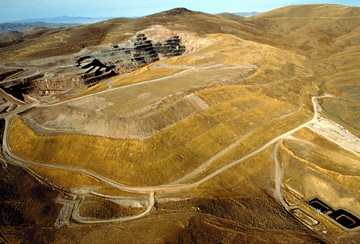
Geotimes Home | AGI Home | Information Services | Geoscience Education | Public Policy | Programs | Publications | Careers

 The latest court
battle is Barrick Goldstrike Mines vs. EPA, now being heralded as a victory for
the mining industry. The U.S. District Court for Washington, D.C., ruled in April
that mine operators do not have to report trace metals in waste rocks to TRI.
Judge Thomas Penfield Jackson said that mining waste rock does not fall under
the EPA's definitions for manufactured and processing and therefore cannot be
included in reporting to TRI. Environmental groups say that the ruling severely
limits public right-to-know laws.
The latest court
battle is Barrick Goldstrike Mines vs. EPA, now being heralded as a victory for
the mining industry. The U.S. District Court for Washington, D.C., ruled in April
that mine operators do not have to report trace metals in waste rocks to TRI.
Judge Thomas Penfield Jackson said that mining waste rock does not fall under
the EPA's definitions for manufactured and processing and therefore cannot be
included in reporting to TRI. Environmental groups say that the ruling severely
limits public right-to-know laws. |
Geotimes Home | AGI Home | Information Services | Geoscience Education | Public Policy | Programs | Publications | Careers |